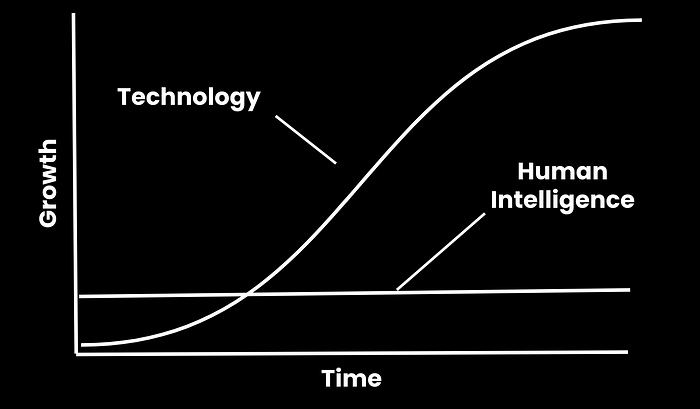Bringing the Matrix to Life w/ Brain-Computer Interfaces
The Wonderful World of Brain-Computer Interface
It seems so crazy that The Matrix came out two decades ago. The impact of this spectacular movie cannot be understated. Many would argue that it was and still is one of the best Science Fiction Films of all time.
It was a film EVERYONE talked about
For those of you that are unfamiliar, the Matrix is a two-decade-old, deeply philosophical film wrapped inside a highly entertaining martial art, science fiction action movie. Up to this day, fans love to theorize and discuss over it. In part because it was so far ahead of its time to begin with. Every single scene was action-packed and filled with futuristic technologies. However, there is one scene in particular that took the world by surprise:
Amazed and rather dumbfounded, Neo triumphantly cries out: “I know kung fu!”

Through the power of Brain-Computer Interfaces, Neo, the protagonist of the film, was able to overcome the limits of his biological self. This was done when his brain was stimulated in order to effectively download or learn different kinds of martial arts and fighting moves. Shortly after gaining these new skills, Neo is put to the test by fighting in a simulation and then once again later on in the movie when he is forced to fight off three guards.
Now, let me explain how exactly this technology could work in the future and how we can add a sense of realism to it.
At the most basic level, a Brain-Computer Interface is a computer-based system that acquires brain signals also known as EEG signals, analyzes them, and translates them into commands. Then, they are relayed to an output device to carry out the desired action.
Here is a sample video of me using my EEG signals in order to control the dino from google. Every single time I would blink, my brain signals would pick up on it, and the dino would jump
Now the reason why I picked this device with its respective function of downloading things onto your brain, is because of its INSANE POTENTIAL to solve one of the biggest barriers known to mankind — ourselves. You see, as the world is getting incredibly complex, the limitations in regards to the quality and speed of accessing our brains have led to largely destructive results. And Neo was able to use emerging technology to tackle this issue. In a matter of a few minutes — He went from knowing nothing about Martial Arts to becoming a well-versed fighter. An art that usually takes years to master.

One thing that is extremely important to note is that although technology continues to grow at an exponential rate, human intelligence….has remained stagnant. Historically, our intelligence has been sufficient enough to fulfil and discover things. However, now our intelligence is failing us as it is utterly unfit to efficiently solve major challenges and conflicts that naturally arise in a multi-faceted, hyper-connected world like ours today.
This issue is a speed problem- it is an energy problem- it is how fast you can get information into and out of your brain.
If you have something you want to write down on your computer, you have to type it with your hands or speak it into a microphone that is probably going to mess it up.
If you want to learn something, it could potentially take day, weeks, months, and even years
However, by solving this issue, we could accomplish exponentially more in less time and with less physical effort
And that is why the thought of being able to free ourselves from the limitations of our biological brain using Brain-Computer Interface — just like Neo did — — is such an insane but feasible concept.
Nevertheless, in order to actually “brain boost” or actually “download things on to your brain,” there are more advanced types of BCIs we must use — This includes;
- Transcranial Direct Current Stimulation
- Transcranial Magnetic Stimulation
- Brain to Cloud Configuration.
Let’s begin by talking about Transcranial Direct Current Stimulation. Now, for those of you that are wondering, Transcranial Direct Current Stimulation is a brain stimulation technique that delivers a low electric current to the scalp. tDCS has been shown to make people learn faster, enhance mindfulness, treat depression and many more. This week, I hopped on a 2 hour 1 on 1 call with the CEO of Humm, Iain Mcintyre. Humm has built a wearable patch that comfortably and safely stimulates the prefrontal cortex, improving working memory by 20%. Just to put this in perspective, this basically means that you would be able to learn a task/skill 120 times faster. Now, although this is not the exact same thing as downloading a skill onto your brain, the company is well on their way to get there.
Now, as I stated before, another way in which we could potentially “download kung fu” onto our brains is through the use of a somewhat brain-to-cloud configuration.
But before I go into depth on what that would look like, let’s define what a neocortex is. The neocortex is the center for higher brain functions, such as perception, decision-making, and language. Many people like to refer to the neocortex as the framework upon which life’s experiences and memories will be imprinted. We have 300 million modules in our neocortex, each of which is organized in our hierarchy of thinking. Now let’s put this into perspective — in terms of whether or not 300 million modules is actually enough?
Well, if we think about it, with our neocortex of 300 million modules we were able to invent language, discover electricity, understand the molecular structure of DNA, and so on and so forth. But it is also extremely limited when you come to think about how long it takes for you to read a book or learn a language. And so, by connecting our neocortex to the cloud, we will be able to expand our neocortex without limit, meaning that you will be able to learn a skill in a matter of seconds or you know, go through all the content in med school within a day.
Pretty cool..right?
So now, comes the question. How long? How long for us to be able to get to the level at which our brains are connected to the cloud?

Ray Kurzweil, author, inventor, and futurist believes that by 2030, we will have the ability to directly plug our brains into the internet, allowing us to upgrade our intelligence, memory, and skills in a HUGE way. Can you imagine? In a matter of a few seconds, we could potentially become a Martial Arts Champion, just like Neo did.
In fact, there are already a plethora of companies working towards making this sci-fi fantasy — a reality.

One company that I am sure a lot of us have heard about is Elon Musk’s Company, Neuralink. Neuralink aims to implant wireless brain-computer interfaces in the most complex human organs to help cure neurological conditions like Alzheimer’s, dementia, and spinal cord injuries and ultimately build towards breaking free from the limits of our biological brain, just like Neo did when he learned Kung Fu.
With a form of technology this powerful, it is crucial that we ask ourselves questions to weigh the pros and the cons of the technology. What if your brain could be hacked? What if you were happy..but a third party made you sad? If we are trying to optimize humanity for happiness and contentment, is this really the best path to go down? Another question — Would you even want something implanted in your brain?
